Jianzhan, also known as “Tenmoku” in English, is one of the traditional Chinese ceramics. It is a type of black-glazed tea bowl produced in regions such as Fujian, Zhejiang, and Jiangxi. Among them, the Jianzhan produced in Jianyang, Fujian, is the most famous. The typical form of Jianzhan is either round or resembling a traditional Chinese hat called “douli.” The diameter of the mouth is usually between 10 to 20 centimeters. Jianzhan is a specific type of tea vessel designed for tea appreciation.
what are jianzhan?
Jianzhan refers to black-glazed tea bowls produced in the Jian kilns, and they were tea utensils used exclusively by the imperial court during the Song Dynasty. Jianzhan is a representative of black-glazed ceramics and gained popularity during the Song Dynasty, playing a significant role in the tea culture of that era.
The crafting process of Jianzhan is remarkably unique. During the glazing process, the technique of underglaze glazing is employed, enveloping the entire vessel’s form within the glaze without revealing the vessel’s surface. This craftsmanship imparts a sense of depth, serenity, and mystique to the glaze color of Jianzhan. Furthermore, the body and glaze of Jianzhan possess distinct characteristics. The body is relatively thick, and the glaze is rich and lustrous, displaying deep and oily hues. This material quality enhances the richness and sweetness of the tea’s flavor.
Using Jianzhan for tea drinking not only allows one to experience the genuine taste of tea leaves but also provides insight into the cultural significance and artistic value embedded in Jianzhan. The typical shape of Jianzhan is round or hat-shaped, with a diameter generally ranging from 10 to 20 cm, making it highly suitable for tea tasting. Throughout its use, people can appreciate its delicate touch and exquisite craftsmanship.

Beyond its crafting techniques and tea-tasting experience, Jianzhan carries significant cultural meaning. During the Song Dynasty, tea culture flourished, and the custom of tea competitions thrived, with Jianzhan being an essential tea utensil for such events. It can be said that Jianzhan is a treasure among traditional Chinese ceramics, characterized by its unique craftsmanship and cultural essence. In modern society, as tea culture experiences a revival and people rekindle their passion for traditional heritage, Jianzhan has once again captured people’s attention. Many tea enthusiasts consider Jianzhan a cherished collector’s item or use it to elevate their tea-drinking experience.
Kinds of jianzhan
Jianzhan ceramics often feature a wide mouth and a small base, with some taking on the shape of a funnel. Many possess a footring that is shallow and slightly angled outward, often with a chamfered edge at the footroot (commonly referred to as “cutting the corner”), and the foot’s underside is slightly outward-slanting. A minority of them have a solid foot (mainly in the case of small round bowls). The shapes are simple and robust, resulting in a generally weighty tactile sensation. Jianzhan can be categorized into four main types based on their mouth shapes: open mouth, flared mouth, folded mouth, and tied mouth. Each category is further divided into large, medium, and small sizes. Small round bowls are included in the small folded mouth bowl category.
Open Mouth Bowl: The mouth rim flares outward with a pointed circular lip. The belly wall is either slanting straight or slightly arched, with a shallow belly that tapers inward at the bottom. It has a shallow footring. The shape resembles a funnel and is commonly referred to as a “funnel bowl.” Medium and small-sized bowls are common, with large-sized ones being rare.
Flared Mouth Bowl: The mouth rim flares outward with a slightly curved lip, slanting belly, and a shallow footring. It comes in large, medium, and small sizes. This type of bowl has a relatively higher proportion of large-sized pieces compared to other types, but the yield is low, making it particularly precious. Medium and small-sized bowls are more common.
Folded Mouth Bowl: The mouth rim slightly tapers inward, with a sloping belly and a short footring with a shallow foot. The shape is plump. Medium and small-sized bowls are common, with a higher proportion of small-sized bowls, some of which have a round, flat foot.
Tied Mouth Bowl: The mouth rim flares outward with a slightly arched belly that tapers inward at the bottom. It has a shallow footring, and about 1-1.5 centimeters below the mouth rim, there is a shallow and distinct groove that runs inward, forming what is commonly known as the “water filling line.” This feature serves the purpose of both gauging the amount of tea soup and preventing spillage. Bowls
jianzhan styles
Jianzhan is classified into six types: Wu Jin Jianzhan, Tu Hao Jianzhan, You Di Jianzhan, Zhe Gu Ban Jianzhan, Yao Bian Jianzhan, and Za Se You Jianzhan. Jianzhan refers to black-glazed tea bowls produced in the Jian kilns, specifically known as Jian Kiln Black Glazed Bowls. Most of the black-glazed ceramics produced by Jian kilns during the Song Dynasty were tea bowls, collectively referred to as Jianzhan. These bowls were representative of black-glazed ceramics and were exclusively used by the imperial court during the Song Dynasty.
The classification of Jianzhan includes the following types:
Wu Jin (Black and Gold):
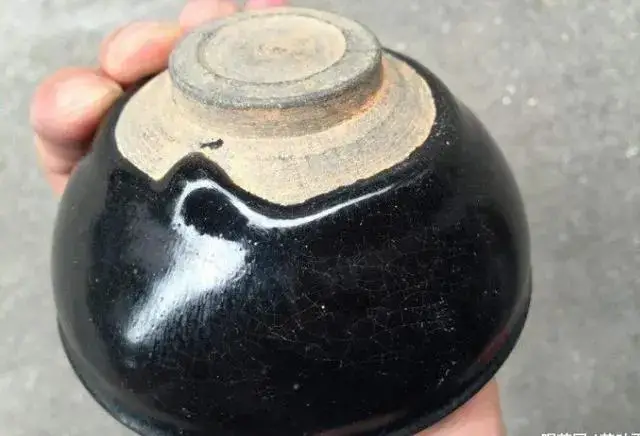
This is a typical glaze color of Jian kilns. Wu Jin glaze can vary from jet black to a black with a hint of green, referred to as “green-black.” Some may appear black-brown or soy black. In the mature phase, Wu Jin glaze tends to be relatively thick, presenting a deep, lustrous, and dignified appearance.
Tu Hao (Rabbit Fur):
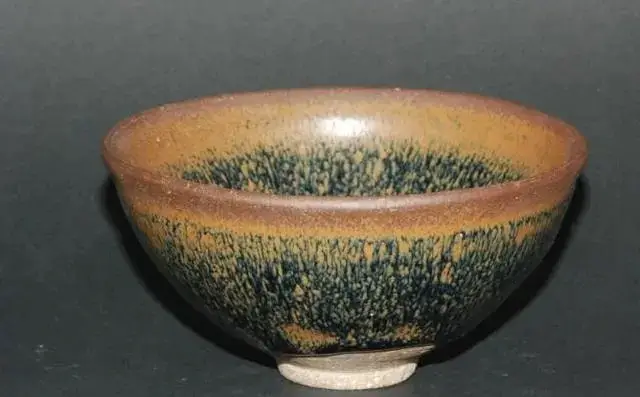
The phrase “rabbit brown golden thread treasure bowl, pine breeze crab-eye new soup” by Huang Tingjian describes the rabbit fur within Jianzhan. Tu Hao is the most typical and abundant product of Jian kilns, often referred to as “rabbit fur bowl.” This type comes in gold, silver, and blue rabbit fur, earning its name due to the glaze texture resembling the soft and lengthy fur of a rabbit.
You Di (Oil Spot):
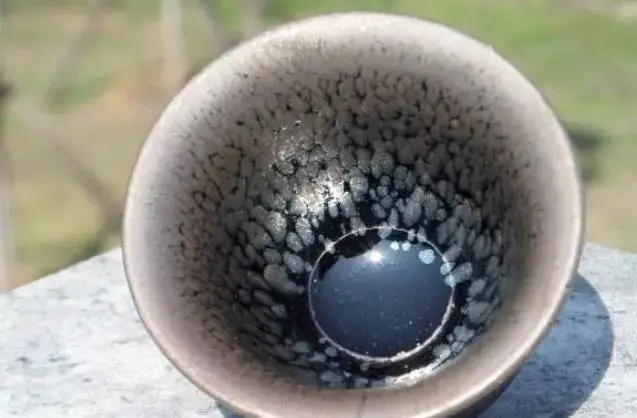
Oil Spot is a rarity within Jianzhan, second only to Yao Bian. It’s extremely challenging to produce. “Oil Spot” refers to numerous small speckles with golden or silver metallic luster scattered over the black base glaze. Thus, there are distinctions between “gold oil spot” and “silver oil spot.” These spots are generally circular, with diameters ranging from three to four millimeters for larger ones and as tiny as a needlepoint for smaller ones, resembling scattered oil droplets.
Zhe Gu Ban (Partridge Feather):
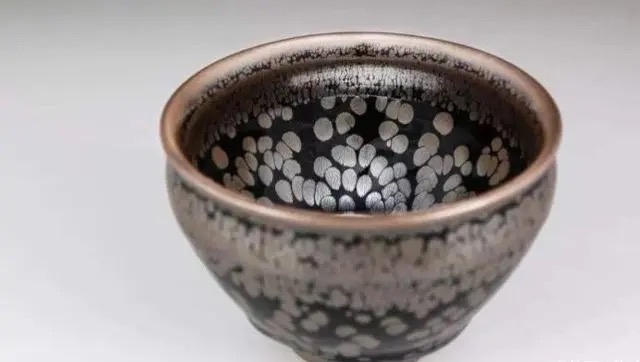
Zhe Gu Ban is a more precious product among Jianzhan. “Zhe Gu Ban” refers to the glazed surface pattern resembling the scattering of circular white spots on the chest of a partridge. It’s formed through the mechanism of floating, with small speckles assembling to create larger, varied-sized spots. These spots, resembling partridge feathers floating on the glaze surface, form various-sized large spots that may exhibit visible furrows.
Yao Bian (Changing Glaze):
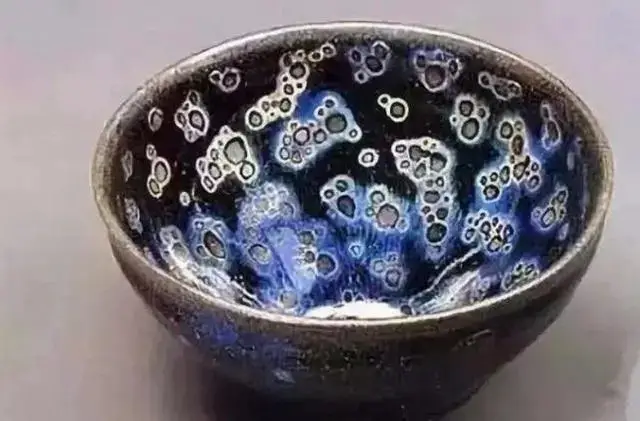
“Yao Bian” refers to the accumulation of irregular round spots, or solar flares, on the black base glaze. Yao Bian spots are widespread within the inner walls of Jianzhan and change appearance as the viewing angle shifts. When observed vertically, they appear blue, while at an angle, they emit flashes of gold light, creating the illusion of being amidst a vast cosmic expanse surrounded by countless dazzling stars. Yao Bian Jianzhan’s formation is mainly serendipitous, with odds of occurrence at one in a million. At present, only three pieces of Yao Bian Jianzhan exist, preserved respectively at the Shokado Library in Japan, the Fujita Art Museum, and the Longguang Monastery. They are considered national treasures by Japan.
Za Se You (Various Color Glaze):
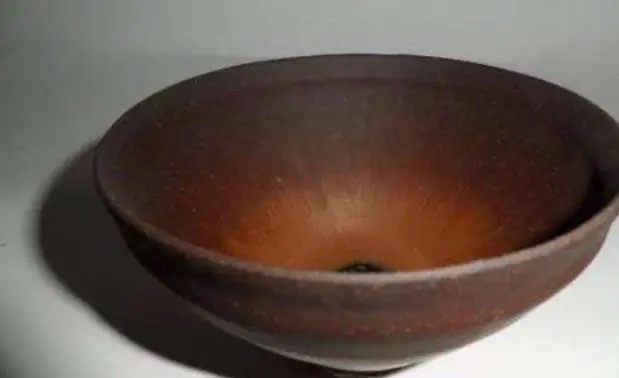
Za Se You Glaze arises from the kiln variations of Jian kilns’ black glaze. The glaze surface textures are highly diverse. In addition to the five major glaze textures mentioned above, there are also various color glazes such as persimmon red, crimson, gray-white glaze, sesame flower, crystalline ice patterns, crackle patterns, and soy glazes (soy green glaze, soy black glaze, soy yellow glaze), among others.
Jian Zhan characteristic
Jian kiln black glaze is a type of crystalline glaze and falls under the category of high-iron lime glaze, providing the essential conditions for firing black glaze. Additionally, lime glaze has strong viscosity, and its most distinctive feature is that it tends to flow easily at high temperatures. As a result, the outer wall at the base of Jianzhan often exhibits glazed drips, while the glaze layer along the rim of the vessel is thinner and presents a reddish-brown hue, with some resembling a “mang” (flared) mouth. The fundamental characteristics of Jian kiln black ceramics’ body include: a black or gray-black color on the cross-section due to the high iron content; a solid and hard body with a metallic sound when tapped, commonly known as an “iron body,” resulting in a substantial tactile sensation; the presence of a considerable amount of sand particles, resulting in a coarser body texture, and exposed body areas also feel rough. From the perspective of firing techniques, Jian kiln black ceramics are fired at high temperatures. If the clay body is too finely washed, the wares are prone to deformation. Due to the substantial body of Jianzhan within Jian kiln black ceramics, the body contains small air pores, which facilitate heat retention in tea soup, making them suitable for the requirements of tea competitions.
jianzhan history
Jianzhan, a name steeped in profound historical and cultural significance, is an integral part of traditional Chinese ceramic art. The term “Jianzhan” literally translates to tea bowls produced in Jianzhou, which originated from Jianzhou in Fujian, now known as Jianyang, Fujian. Its origins can be traced back to the late Tang Dynasty and Five Dynasties period. Over the course of more than a millennium, it reached its peak during the Song Dynasty, becoming a vital vessel for tea culture at that time.
The history of Jianzhan can be broadly divided into three stages. Firstly, the period of the Song Dynasty marked its zenith. Amid the competitive tea-drinking culture of the Song Dynasty, Jianzhan gained popularity due to its rich cultural connotations and distinctive crafting techniques. Varieties like “Yao Bian” (crystalline transformation), “You Di” (oil droplet), and “Tu Mao” (hare’s fur) glazes became representative of Jianzhan. These glazes, with their unique black glaze patterns and deep purple-black bodies, showcased the exceptional craftsmanship and distinct aesthetic of Jianzhan.
Secondly, during the Yuan, Ming, and Qing Dynasties, Jianzhan experienced a gradual decline as tea culture evolved. Nevertheless, Jianzhan maintained a certain level of production scale and craftsmanship, gradually evolving into a regionally distinctive ceramic art form. During this period, new developments emerged in Jianzhan’s production techniques and decorative skills, such as the application of techniques like “qinghua” (blue and white) and “wucai” (polychrome), adding new artistic allure to Jianzhan.
Lastly, in the modern era of revival, which began in the 20th century, Jianzhan encountered new opportunities with the resurgence of tea culture and renewed appreciation for traditional craftsmanship. Modern Jianzhan production techniques have greatly advanced, and innovations and expansions have occurred in material selection, decorative techniques, and more. Jianzhan has transitioned beyond being just a practical tea utensil; it has become a collectible art piece of significant value.
when was jian zhan invented?
Jianzhan, which originated in the late Tang Dynasty and the Five Dynasties and Ten Kingdoms period, is a name imbued with profound historical and cultural significance. It is an integral part of traditional Chinese ceramic art. The term “Jianzhan” literally refers to tea bowls produced in Jianzhou, which is derived from Jianzhou in Fujian, now known as Jianyang, Fujian. Its origins can be traced back to the late Tang Dynasty and the Five Dynasties and Ten Kingdoms period. After more than a millennium of development, it reached its production peak during the Song Dynasty, becoming an important carrier of tea culture at that time.
where jian zhan come from?
Jianzhan, renowned as the “Pearl of Porcelain” in Nanping City’s Jianyang District, Fujian Province, is one of China’s National Geographical Indication Products. Originating in the Five Dynasties and Ten Kingdoms period during the late Tang Dynasty, Jianzhan has undergone over a millennium of development, reaching its pinnacle of production during the Song Dynasty and becoming a significant carrier of tea culture at that time. The fundamental form of Jianzhan features an open mouth and a small foot, slanting straight walls, smaller than a rice bowl but larger than a wine cup. Its unique and captivating shape, glossy black glaze, and distinct decorations make it visually appealing.
Jianzhan’s crafting techniques and materials are the homeland of crystalline glazes such as “yao bian” (transformation glaze), “you di” (oil-spot glaze), and “tu mao” (rabbit hair glaze). These exceptional techniques and materials contribute to Jianzhan’s status as a supreme representative of black glazed ceramics during the Song Dynasty. Beyond being a piece of art, Jianzhan symbolizes cultural heritage and is one of the treasures of traditional Chinese culture.
Jianzhan originates from Jianyang District in Nanping City, Fujian Province. As of September 2015, there are more than 50 known mineral resources within Nanping City’s territory, with over 30 types having confirmed reserves. These minerals include copper, lead, zinc, coal, iron, niobium-tantalum, glass, gold, silver, platinum-palladium, tungsten, tin, graphite, pyrite, fluorite, kaolin, talc, barite, limestone, dolomite, serpentinite, potassium feldspar, mica, piezoelectric quartz, vermiculite, alum, perlite, phosphorite, and more.
Nanping City hosts 11 major mineral deposits, including piezoelectric quartz in Zhenghe, smelting quartz, pyrite in Pucheng, fluorite in Shaowu, Jianyang, Songxi, and Guangze, graphite in Jianyang, niobium-tantalum in Yanping, limestone in Shunchang, and cement siliceous raw materials. There are 15 medium-sized mineral deposits, among which there are four lead-zinc deposits, four fluorite deposits, one limestone deposit, two serpentinite deposits, two pyrite deposits, one niobium-tantalum deposit, and one cement siliceous raw material deposit. There are over 80 small-scale mineral deposit locations. There are over 700 known mineralized points, over 200 geochemical anomalies, over 200 heavy sand anomalies (including 14 gold heavy sand anomalies and 112 tungsten-tin-molybdenum heavy sand anomalies), over 50 stream sediment anomalies, over 20 magnetic anomalies, and over 100 surface magnetic anomalies suitable for crafting Jianzhan.
what are jian zhan made of?
Jianzhan is mostly made from clay materials, and the clay is commonly referred to as red clay.
It belongs to a special type of soil found in the southern Fujian region, known as “red clay,” which has a high iron content. Typically, a series of processes are required for successful firing during production. To enhance aesthetics, glazing is often applied to the surface of Jianzhan.
Main Raw Materials:
Yellow clay, clay, red clay, feldspar; sourced from the protected area. Notably high in Fe2O3 content.
Supplementary Raw Materials:
Wood ash, pine wood.
what are jian zhan used for?
Jianzhan serves as a tea utensil for brewing tea, a collectible art piece, and a container for various purposes. Jianzhan is a traditional porcelain of the Han ethnic group and is one of China’s “Eight Famous Porcelains” from the Song Dynasty. Originally used by the imperial court during the Song Dynasty, it was also known as “Youtui” and “Youdizhu.” Unlike ordinary tea utensils that merely hold tea, Jianzhan excels in its ability to retain warmth, enhance alkalinity in tea, maintain the taste of tea, and elevate its aroma, allowing for a rich and satisfying tea-drinking experience.
【Part One】
(1) Drinking tea from Jianzhan creates a harmonious and smooth sensation, with a strong tea essence, deep and concentrated flavor, subtle fragrance, and enhanced alkalinity and warmth preservation. It not only ensures the tea’s taste but also heightens its aroma, delivering an ultimate experience of softness, smoothness, sweetness, and satisfaction.
(2) Many Jianzhan enthusiasts mention that regardless of whether it’s used for white wine, beer, red wine, plain water, mineral water, coffee, or other liquid beverages, the taste is more pure and delicious.
(3) Those who frequently use Jianzhan for tea know that the water quality improves to become soft and sweet, attributed to Jianzhan’s effect of producing soft and smooth water. This result is similar to using an iron pot to boil water.
【Part Two】: Jianzhan’s Health Benefits
Because Jianzhan’s body glaze contains chemical components such as silicon dioxide, aluminum oxide, iron trioxide, and calcium oxide, the high iron content continuously releases ferrous ions during usage. It also absorbs chloride ions from water, which are easily absorbed by the human body, enhancing hemoglobin carriers and red blood cell functionality. This helps prevent anemia and high blood pressure while regulating the central nervous system for a soothing effect. Additionally, it assists in balancing the endocrine system and inhibits enzyme activity that bacteria rely on for survival, achieving bactericidal effects.
【Part Three】: Jianzhan’s Preservation Qualities
During hot summer nights, leftover food is placed in both a lidded white bowl and a Jianzhan. If left overnight, the leftovers in Jianzhan remain edible without spoilage, while those in the white bowl become sour and emit a pungent odor. Similarly, when brewing tea using a cup covered by either a white bowl or a Jianzhan, the Jianzhan maintains its durability and original taste, while the white bowl becomes less durable and results in astringent tea.
【Part Four】: Jianzhan and Life, Nurturing Jianzhan Is Nurturing Character
There’s a saying, “Cultivate oneself internally while displaying oneself externally,” emphasizing self-cultivation and demeanor. Similarly, nurturing Jianzhan is akin to nurturing one’s character. It requires a calm and patient mind. Practicing tea appreciation and nurturing Jianzhan complement each other, mirroring the nurturing of one’s character. A well-cared-for Jianzhan exhibits a lustrous and soft exterior while maintaining an understated and unpretentious interior. Just like a true gentleman, it exudes dignity, stability, humility, and elegance. Interacting with it feels like entering a room filled with orchids where the fragrance goes unnoticed. This may indeed be the essence of noble companionship.
jian zhan symbolize
Jianzhan holds significant meaning and symbolism in traditional Chinese tea culture. Firstly, it embodies auspiciousness, representing the arrival of good luck and happiness. Secondly, Jianzhan symbolizes togetherness and intimate friendships, often serving as a precious tea set to entertain close friends and family. Additionally, it conveys a sense of celebration and joy, widely used for commemorating weddings, birthdays, festivals, and other important occasions.
The profound meanings and symbolism of Jianzhan are closely intertwined with its distinctive design and materials. With its wide mouth and narrow base resembling a funnel, Jianzhan not only facilitates drinking but also provides a better view of the tea’s color and the patterns formed by the tea leaves, showcasing the fusion of practicality and aesthetics. Moreover, Jianzhan features a black glaze texture, which, when illuminated, exhibits a beautiful gloss and color, imparting a sense of nobility and elegance.
jian zhan tenmoku
“Jian Zhan Tenmoku” refers to a type of tea bowl known as Tenmoku in Chinese, which is characterized by its unique glaze and appearance. The term “Jian Zhan” specifically refers to a style of tea bowl produced in Jian Kiln during the Song Dynasty in China. These bowls are known for their dark glaze that exhibits various patterns and colors, resembling the appearance of oil spots, and are highly regarded in the realm of traditional Chinese tea culture.
The “Tenmoku” name itself is derived from the Tianmu Mountain, where Japanese monks who traveled to China in ancient times brought these bowls back to Japan. These bowls were highly prized in Japan and are also referred to as “Tenmoku” in the Japanese tea ceremony tradition.
Jian Zhan Tenmoku bowls are often revered for their intricate and mesmerizing glaze patterns, making each piece a unique work of art. They have a deep connection to the appreciation of tea, as the variations in the glaze are said to enhance the experience of drinking tea. The combination of history, craftsmanship, and cultural significance makes Jian Zhan Tenmoku bowls highly sought-after collectibles and cherished items among tea enthusiasts and collectors alike.
tenmoku glaze
“Tenmoku glaze” refers to a specific type of glaze used in ceramics, particularly in the creation of tea bowls and other pottery. The term “Tenmoku” originated from Tianmu Mountain in China, where Japanese monks brought back tea bowls with this distinctive glaze during ancient times. Tenmoku glaze is known for its rich, dark coloration and the unique patterns it creates during firing.
The key characteristic of Tenmoku glaze is the way it interacts with the kiln atmosphere during firing. The glaze consists of iron oxide, and its appearance can range from a deep black or brown to a reddish-brown, often with variations in color and texture that resemble landscapes, oil spots, or even the night sky.
Tenmoku glaze forms intricate patterns due to the flow of the molten glaze during high-temperature firing, which interacts with the kiln’s atmosphere and the arrangement of pieces within the kiln. This process results in the formation of unique and unpredictable patterns that are highly prized for their artistic value.
Tenmoku-glazed pottery, including tea bowls and other vessels, is revered for its beauty and its role in enhancing the enjoyment of tea. The interaction between the glaze and the tea’s color and texture creates a visually captivating experience for the tea drinker. Tenmoku glaze has a long history and cultural significance in both Chinese and Japanese tea ceremonies, and it continues to be celebrated for its aesthetic and artistic qualities.
how to make jian zhan?
Creating traditional Jian Zhan tea bowls involves a specialized ceramic-making process. Here’s a simplified overview of the steps involved:
Clay Selection: Choose a suitable clay with high iron content, which is essential for achieving the distinctive dark color and unique patterns of Jian Zhan. The clay should be well-prepared, free from impurities, and thoroughly kneaded to remove air bubbles.
Wheel Throwing: Shape the clay on a potter’s wheel to create the basic form of the tea bowl. Pay attention to the size, shape, and proportions that are characteristic of Jian Zhan.
Trimming and Shaping: Trim the excess clay from the base and refine the shape to achieve the desired form. Create the characteristic flared rim and gradually sloping walls that define Jian Zhan’s profile.
Drying: Allow the tea bowl to dry slowly and evenly to prevent cracking. This process can take several days, depending on the humidity and thickness of the clay.
First Firing: Bisque-fire the tea bowl in a kiln at a relatively low temperature to harden the clay and prepare it for glazing. This step removes any remaining moisture and organic matter.
Glazing: Apply the Tenmoku glaze to the bisque-fired tea bowl. The glaze should be carefully prepared and applied evenly, considering its tendency to flow and create characteristic patterns during the firing process.
Second Firing: Fire the glazed tea bowl at a high temperature in a reduction atmosphere, which means the kiln’s oxygen supply is limited. This firing technique is crucial for achieving the rich dark color and unique patterns of Jian Zhan. The interaction between the iron in the glaze and the reduction atmosphere creates the signature visual effects.
Cooling and Unloading: Allow the kiln to cool gradually before unloading the finished tea bowls. The glaze patterns will have formed during the cooling process.
Quality Check: Examine the finished Jian Zhan tea bowls for defects, cracks, or undesirable patterns. The most successful pieces will exhibit the desired color and patterns.
Finishing Touches: If necessary, smooth any rough edges or surfaces on the tea bowl. The bottom of the bowl can be left unglazed or glazed with a complementary glaze.
Creating authentic Jian Zhan tea bowls requires a deep understanding of ceramic techniques, glaze chemistry, and the specific firing conditions that contribute to the distinctive appearance of these pieces. It’s a process that requires skill, experience, and an appreciation for the traditional art form.
is jian zhan safe?
Jian Zhan tea bowls, like other ceramic wares, are generally safe for use when they are made and glazed properly. However, there are a few important factors to consider to ensure their safety:
Glaze Composition: The glaze used on Jian Zhan tea bowls should be food-safe and free from harmful materials. Traditional glazes for Jian Zhan are often made from natural materials like iron-rich clay and ash, which are typically safe when fired at high temperatures. Modern potters also use food-safe glaze formulations to ensure the safety of their creations.
Firing Temperature: Proper firing at high temperatures ensures that the glaze fuses with the clay, creating a durable and non-toxic surface. If the kiln firing temperatures are too low or the firing process is not controlled properly, there is a risk that the glaze might not bond correctly, potentially leading to safety issues.
Cracks and Imperfections: Properly made and fired Jian Zhan tea bowls should not have cracks, fissures, or other visible imperfections in the glaze or clay. Cracks can provide a pathway for liquids and contaminants to enter, potentially compromising the safety of the vessel.
Leaching and Lead: Properly formulated and fired glazes should not leach harmful substances into food or beverages. Lead is a particular concern, so using glazes that are certified lead-free is important. Reputable potters and artisans should be knowledgeable about the materials they use and ensure they comply with safety standards.
Source and Trustworthiness: When purchasing Jian Zhan tea bowls, choose pieces made by reputable potters or artisans who adhere to safety standards. Look for artisans who use food-safe materials, follow proper firing techniques, and have a good track record of producing safe ceramic wares.
Inspection: Before using a new Jian Zhan tea bowl, carefully inspect it for any visible cracks, sharp edges, or irregularities. If you notice any issues, it’s best not to use the bowl for food or beverage consumption.
In summary, properly made and glazed Jian Zhan tea bowls that are created by knowledgeable and skilled artisans should be safe for use. However, it’s always a good practice to purchase from reputable sources and inspect the bowls for any defects before using them with food or beverages.
The selection of clay for Jian Zhan includes three types of local soils: red clay, clay, and high-temperature clay. Firstly, the materials used are naturally sourced and safe. Secondly, the glaze color of Jian Zhan is a crystalline glaze formed by iron elements, a natural result of kiln transformation. The choice of glaze materials for Jian Zhan also leans towards natural components. Lastly, Jian Zhan requires firing at temperatures above 1200-1300 degrees Celsius in the kiln, which ensures its stability and safety after undergoing high-temperature firing. Authentic Jian Zhan has undergone rigorous scientific testing and adheres to national standards for daily-use ceramics. It is safe, non-toxic, and suitable for tea brewing, so there is no need for concerns.
Nowadays, the trend of tea competitions has faded, and the technique of kneading tea leaves into a paste has become unfamiliar. The white tea paste that used to resemble snow is no longer commonly seen in Jian Zhan. The green tea, black tea, oolong tea, white tea, and yellow tea that we are familiar with almost lose their distinctive colors in Jian Zhan and appear pitch black. However, for those of us who love tea, it’s essential to grasp the traces of history and truly experience the inheritance of the tea competition culture.
Jianyao and Jianzhan
“Jian Zhan” is produced in Jian Kiln, which is one of the famous ancient kilns in China. The kiln site is located in Houjing Village, Shuiji Town, present-day Jianyang City. The products from Jian Kiln gained great reputation during the Song Dynasty. Due to the popularity of tea competitions during the Song Dynasty, in addition to high-quality tea leaves, suitable tea utensils were needed for these events. This gave rise to the creation of “Jian Zhan” tea bowls. At that time, literati and scholars praised “Jian Zhan” with verses like “New purple Jian Zhan with hare’s fur pattern,” “Suddenly amazed by the hare’s fur spots on the noon tea bowl,” “Zhegu spots on Jian’an porcelain bowls,” and “The patterns on the bowl’s surface are like lingering clouds, while the hare’s fur inside resembles snow on a clear pond.”
The relationship between “Jian Yao” and “Jian Zhan” is as follows: “Jian Zhan” refers to the black glazed tea bowls produced in the “Jian Yao” kiln. The “Jian Yao” kiln is the place where “Jian Zhan” tea bowls are fired.
“Jian Yao,” also known as the “Jianzhou Kiln,” is one of the representative famous kilns of Song Dynasty ceramics. “Jianzhou” was initially established as a prefecture during the Tang Dynasty and continued into the Song Dynasty with slight boundary changes. The ancient territory of “Jianzhou” was mainly located in the present-day counties and cities of Jianou and Jianyang in Nanping City, Fujian Province.
“Jian Zhan” refers to the black glazed tea bowls fired in the “Jian Yao” kiln. In ancient times, people in the Tang Dynasty referred to containers for drinking tea as “Ou” or simply as bowls. However, during the Song Dynasty, people started using the term “Zhan,” especially when referring to the black glazed porcelain produced in the “Jian Yao” kiln. The majority of these porcelain items were tea bowls, collectively referred to as “Jian Zhan.”
jian zhan VS celadon
“Jian Zhan” and “Celadon” are two distinct types of ceramics with different characteristics and historical significance in Chinese pottery.
“Jian Zhan”:
“Jian Zhan” refers to the black glazed tea bowls produced in the “Jian Yao” kiln during the Song Dynasty.
They are known for their unique black glaze and various decorative patterns created by techniques such as “Yao Bian” (曜变) and “You Di” (油滴).
“Jian Zhan” tea bowls were primarily used for drinking tea, especially during the Song Dynasty.
These tea bowls are prized for their ability to enhance the aroma, taste, and temperature retention of tea.
“Jian Zhan” ceramics are an important part of Chinese tea culture and are often associated with rituals and traditional tea ceremonies.
“Celadon”:
Celadon is a type of ceramic known for its distinctive pale green color, achieved through the use of iron-rich glazes and controlled firing processes.
Celadon ceramics have a long history in Chinese pottery, dating back to ancient times, with notable developments during the Song Dynasty.
The term “celadon” originally referred to ceramics with a green glaze, but over time, it has been used more broadly to describe ceramics with various colors and glazes.
Celadon ceramics were often used for decorative and functional purposes, such as making vases, dishes, and bowls.
The production of celadon involves specific glaze recipes and firing techniques to achieve the desired color and surface effects.
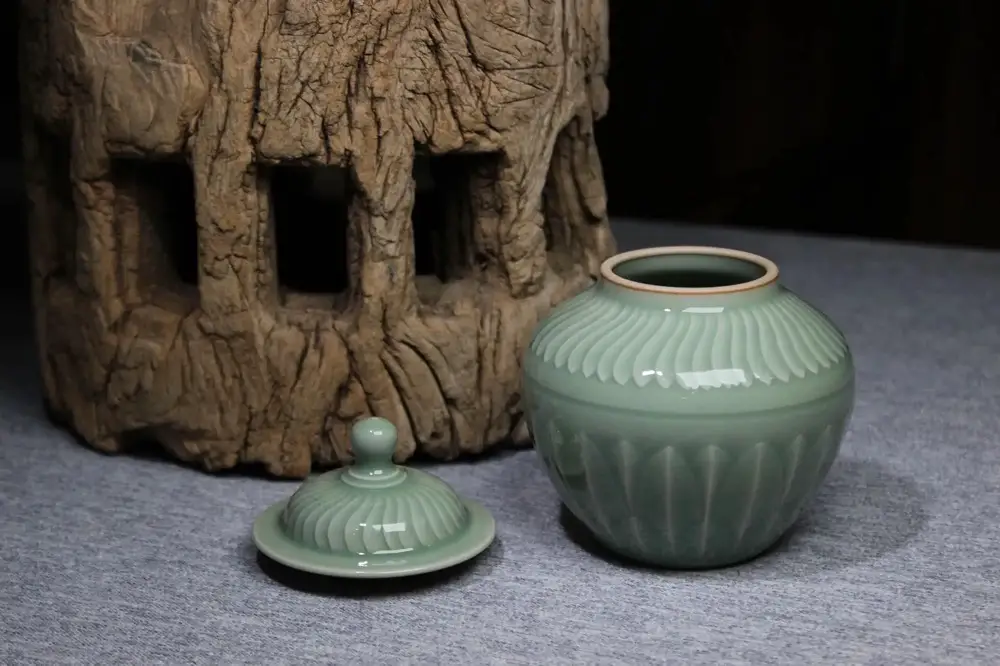
In summary, “Jian Zhan” specifically refers to black glazed tea bowls from the “Jian Yao” kiln associated with tea culture during the Song Dynasty. Celadon, on the other hand, is a broader category of ceramics known for its characteristic green glaze and has a longer history in Chinese pottery, with diverse applications beyond tea.
jian zhan VS Ruyao
“Jian Zhan” and “Ru Yao” are two different types of ceramics from Chinese pottery history, each with its own unique characteristics and historical significance.
“Jian Zhan” :
“Jian Zhan” refers to the black glazed tea bowls produced in the “Jian Yao” kiln during the Song Dynasty.
These tea bowls are known for their distinctive black glaze and intricate patterns created through techniques like “Yao Bian” (曜变) and “You Di” (油滴).
“Jian Zhan” were primarily used for tea drinking and are celebrated for their ability to enhance the aroma, taste, and temperature of tea.
They have a strong association with Chinese tea culture and were used in traditional tea ceremonies.
“Ru Yao” :
“Ru Yao” kilns were known for producing a type of celadon ceramics during the Northern Song Dynasty, specifically during the Ru kiln period (around the 11th century).
“Ru Yao” celadon is characterized by its pale blue-green glaze with a subtle crackled texture.
“Ru Yao” ceramics are considered some of the most prized and sought-after ceramics in Chinese history due to their rarity and exquisite craftsmanship.
These ceramics were often used for both functional and decorative purposes, and they hold immense value for collectors.
In summary, “Jian Zhan” specifically refers to black glazed tea bowls associated with tea culture during the Song Dynasty. “Ru Yao,” on the other hand, refers to the celadon ceramics produced in the “Ru Yao” kilns during the Northern Song Dynasty, known for their distinctive pale blue-green glaze and exceptional quality. Both types of ceramics have distinct cultural and artistic significance in Chinese pottery history.
In general, Jianzhan is a treasure among traditional Chinese ceramics, possessing unique craftsmanship and cultural significance. Using Jianzhan for tea drinking not only allows one to savor the genuine flavors of the tea leaves but also offers a glimpse into the profound depths of Chinese traditional culture.
